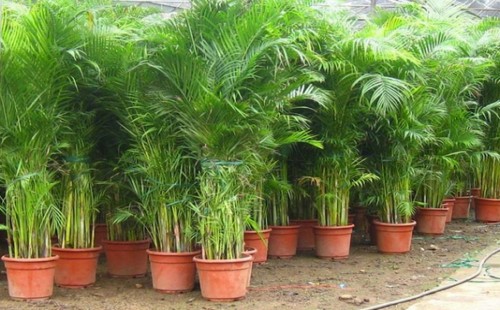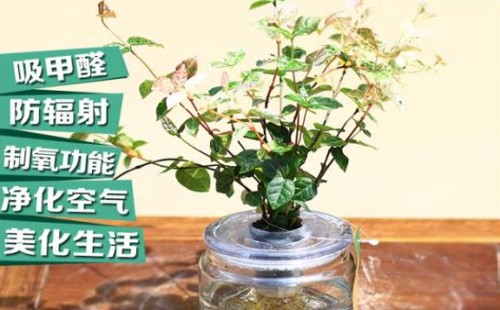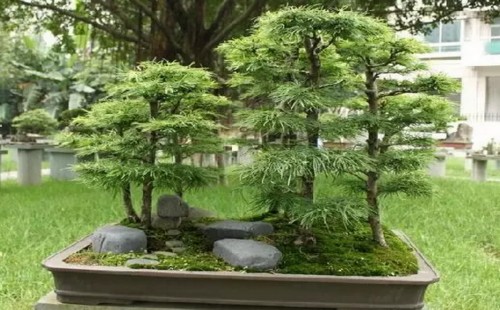Cultivation method of potted Phyllostachys nigra
Phyllostachys pubescens mostly appears in the south of China, so it also likes the warm and humid growth environment, not only light, but also shade, but not cold, which is also consistent with the climate environment in the south, so it is more suitable for pot cultivation in the south. However, the requirements for soil are still fertile and loose, with strong air permeability and water permeability. Today, the editor will share with you the culture method of potted Phoenix tail bamboo.

Under normal growth conditions, potted Phyllostachys pubescens is often larger than other potted flower plants, so it is generally planted as large and medium-sized potted plants. And in order to maintain a good plant type, more efforts are often needed in conservation and management than in general flowers and plants. Next, let's take a look at what aspects of maintenance management work need to be done.
First, basin soil
For Phyllostachys pubescens, pot soil is required to be fertile and loose, permeable and permeable. If some humus-rich rotten leaf soil can be added to the basin soil, the growth effect will be better. It is usually mixed with rotten leaf soil, garden soil and sandy soil. On the other hand, it is also appropriate to bury some rotten cake fertilizer as the base fertilizer in the basin, which is more conducive to promoting the rooting and development of the plant and promoting leaf extraction at the same time.
Second, lighting
Although Phyllostachys pubescens is more shady, it also likes sufficient light and usually likes soft light, so it is more suitable for indoor or outdoor pot culture. If the light is relatively strong, appropriate shading measures should be taken to avoid sunburn of branches and leaves, especially in hot summer, and yellow leaves are easy to occur when receiving strong light for a long time.
Third, temperature
Phyllostachys pubescens likes to grow in a temperature environment of about 20 ℃. It likes to be warm, but it is not hardy. In addition to the need to take measures to keep warm and keep warm when the winter air temperature is too low, there is usually no need to take special care of it, because other seasons are generally more suitable for growth. However, we still need to pay attention to the temperature management in the maintenance environment, because frostbite is easy to occur when the ambient temperature is lower than 0 ℃. So in order to ensure a smooth winter, it is necessary to keep the ambient temperature above 0 ℃.
Fourth, watering
The water resistance of Phyllostachys pubescens is poor, so it should not be overwatered, let alone cause stagnant water in the basin. During the growing period, it is appropriate to keep the basin soil moist, so watering the right amount can be done. Generally, when the basin soil is semi-dry, it is necessary to replenish water in time. In summer, due to hot weather, high temperature, water evaporation and consumption are relatively large, so it is necessary to appropriately increase watering, but should keep spraying more water to cool and moisturize. The demand for water is relatively small in autumn and winter, so it should be strictly controlled, usually for 4-5 days or even watering once a week.
5. Fertilization
The plant shape of Phyllostachys pubescens is larger than that of ordinary potted flowers, so it is usually necessary to apply fertilizer to supplement nutrients in order to meet the growth needs of large plant shape. In addition to barnyard manure, bone meal and cake fertilizer as base fertilizer, some quick-acting fertilizers such as urea and potassium dihydrogen phosphate can be properly ingested in the growing season, and a thin compound fertilizer can be applied every 3 weeks. this is more conducive to promoting plant green spitting. Usually do a good job of soil loosening management, especially every year in early winter to apply some wind chemical fertilizer or miscellaneous fertilizer to improve the soil and promote the growth and development of the root system.
VI. Diseases and insect pests
The main diseases of Phyllostachys pubescens are rust and leaf blight, and the main pests are aphids and golden needles. If you are infected with rust, you can use Dysen zinc wettable powder to spray with water; if you are infected with leaf blight, you can use methyl thiophanate wettable powder to spray with water; if you are attacked by aphids, you can use dichlorvos diluted with water to kill them; if you are attacked by golden needles, you can use parathion with water to kill them.
Time: 2019-05-30 Click:
- Prev

Can mosaic collaterals be hydroponically cultured or hydroponically raised?
Huaye Luoshi is an evergreen vine, but at the same time it has woody branches and vines with faintly visible lenticels. And the leaves of the plant are rich in color, colorful leaves, giving people a colorful visual experience, is a rare foliage plant. Because the plant is rich in color, strong in spleen and strong in resistance.
- Next

How can a potted plant not change soil?
Bonsai should not only be made well, but also do a good job in the maintenance and management of the later stage. Traditionally, potted plants need to be replaced after 2-3 or 4-5 years of cultivation, because the potted soil will harden to varying degrees after a long period of cultivation, affecting the irrigation and absorption of water and fertilizer.
Related
- Fuxing push coffee new agricultural production and marketing class: lack of small-scale processing plants
- Jujube rice field leisure farm deep ploughing Yilan for five years to create a space for organic food and play
- Nongyu Farm-A trial of organic papaya for brave women with advanced technology
- Four points for attention in the prevention and control of diseases and insect pests of edible fungi
- How to add nutrient solution to Edible Fungi
- Is there any good way to control edible fungus mites?
- Open Inoculation Technology of Edible Fungi
- Is there any clever way to use fertilizer for edible fungus in winter?
- What agents are used to kill the pathogens of edible fungi in the mushroom shed?
- Rapid drying of Edible Fungi

